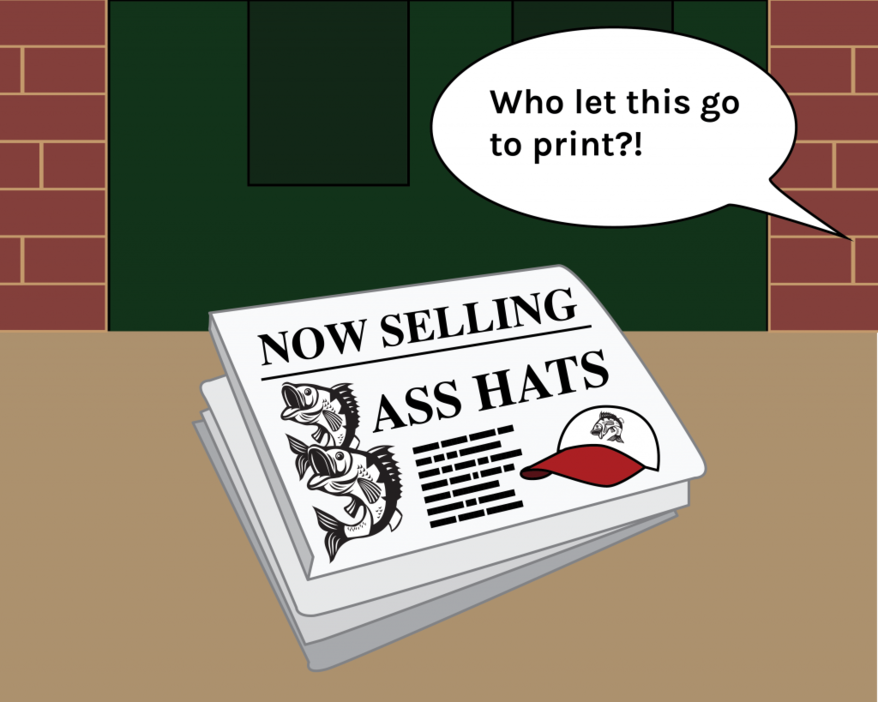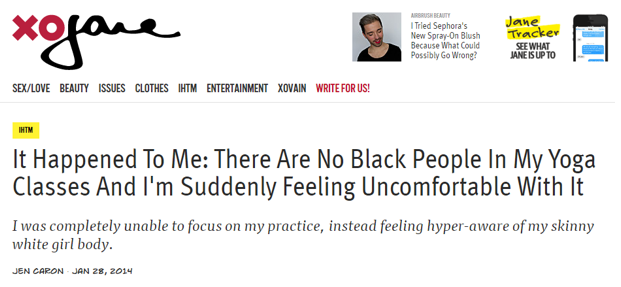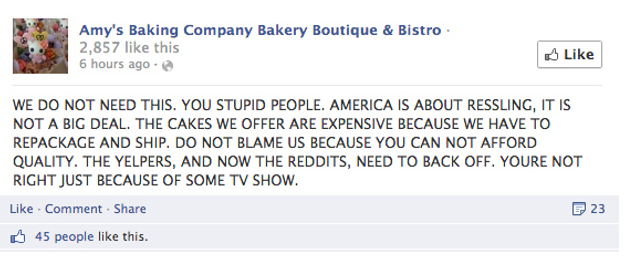
Growing up, we’re always taught that it’s important to learn from our mistakes. Sometimes, it’s better to save yourself the trouble and learn from the mistakes of others.
Check out these real life content marketing mistakes, ranging from “oopsie daisy” to full-on, slow-motion train wreck. Learn where these individuals and brands went wrong and discover how you can avoid a similar fate.
1) Misunderstanding how your content will be received
So. You have an idea for an interesting piece of unique content. You have the genuine intention of articulating a relatable experience, sharing your personal perspective, and provoking thoughtful conversation. You write a piece that you feel accomplishes precisely this goal, and you happily publish it on the World Wide Web.
This is exactly what a well-meaning writer for xoJane appeared to do with her with her article “It Happened To Me: There Are No Black People In My Yoga Classes And I'm Suddenly Feeling Uncomfortable With It.”

The internet read her article and related to her experience, lauded her personal perspective, and engaged in thoughtful conversation – right? Absolutely not.
She did provoke thoughtful conversation, but the discussion centered around how clueless, tone-deaf, and downright offensive the article was. The backlash against XOJane and Jen “Caron” (whose author name was changed after publication) was swift and unrelenting.
Yes, it’s good to have good intentions. However, if intentions were the only thing that mattered, then first place trophies, grade point averages, and manslaughter charges simply wouldn’t exist. While intentions do matter, they will never hold as much weight as the consequences and results that they produce.
When creating new and unique content, it’s incredibly important to take the time to investigate how this content will be perceived by others. Do your due diligence by putting yourself in your readers’ shoes and reading the article from their perspectives.
Prior to publication, give your article to a diverse group of people and be open to all feedback. It’s especially important to put yourself in the shoes of any individuals or communities mentioned in your content. Good intentions alone won’t save you from potentially offending and alienating readers.
2) Failing to give your article an effective title
You just wrote an awesome article and now it’s time to put the cherry on top: an awesome article title to match. You understand that the title is the window to your article’s soul, and a crucial driving force in capturing readers. You cook up an extremely creative and accurately descriptive article that you’re sure will reel in the masses.
Generating an effective, creative, and descriptive article title, however, is easier said than done.
Case in point: The Free Press of Mankato, a local Minnesota newspaper, innocently tried to add excitement to a short title accompanying an article about the health benefits of grapefruit. The excitement – and gross oversight – proved to be anything but innocent, and turned into a national embarrassment for the small-town publication.

The Daily Mail, on the other hand, turned to a lengthy title to accompany a Hillary Clinton-related article. Though the title does a good job at telling readers exactly what the article is about, it also tells readers everything that the article is about.

From the title alone, I already know that Huma Abedin didn’t just have an altercation at the democratic debate, but that she shoved a woman and uttered words. Stern words! And then she walked away (although, I feel like she may have strutted or hair flipped away). Revealing all of the important information contained in the article through the title eliminates the need to read the article itself to get the scoop.
Writing an effective article title involves striking a delicate balance between creativity and length.Creative article titles can succeed in intriguing and compelling readers, but they require you to be wary of unintended and inappropriate appearances, puns, or innuendos. An effective title should also accurately and succinctly describe the general objective or takeaway of the article.
3) Responding inappropriately to negative public reception
So you just created or are featured in an article, video, or another form of content. The next and final step in your content marketing process is content promotion and customer interaction. You take to your brand’s social media and blog to share the content and thank customers for all the praise that they are showering upon you.
The content turns out to be a hit, but not the kind you wanted. Unfortunately, the response is overwhelmingly negative. When your content or brand is facing an unexpected negative reaction, it’s tempting to want to publicly and adamantly defend yourself.
That’s exactly what both Tinder and Amy’s Baking Company Bakery Boutique & Bistro (say that 12 times fast) did, to the shock, horror, and entertainment of all of those who were able to witness their social media meltdowns.
In August 2015, journalist Nancy Jo Sales wrote an article in Vanity Fair – “Tinder and The Dawn of the Dating Apocalypse” – highlighting the app’s effects on dating and hookup culture.

The article did not draw national attention until Tinder made a big stink about it, producing a series of tweets lambasting the article, its statistics, and its author. Though the app stood by its “tweetstorm,” the biggest success of Tinder’s social media defense was in drawing increased attention and readership to an article that they probably would have rather gone unread.
Amy’s Baking Company Bakery Boutique & Bistro, a Scottsdale company featured on the television show Kitchen Nightmares, truly takes the cake (hehe) in proving that all publicity is not good publicity.

The married owners of this company took to Facebook to defend themselves after being dismissed from the television show for being too difficult to work with. What followed was a caps-locked, profanity-filled, Jesus-loving meltdown that will forever be immortalized by screenshots.
The business’ Facebook viciously attacked, insulted, and threatened critics for hours, which only generated increased attention and negative comments. The company later claimed to have been hacked.
So what do you do if you start to receive negative attention because of content your brand or company is featured in, participated in, or created? First, do absolutely nothing.
As Drake said, “trigger fingers turn to Twitter fingers,” so slowly back away from your computer with your hands in the air in order to avoid shooting yourself in the foot.
Cooler heads will prevail. Call all hands on deck for your marketing department, PR agency, and any other brand and communications experts available to devise a thoughtful and strategic response. This may involve anything from a sincere apology, a calculated and appropriate statement of defense, or absolute radio silence.
--
Content marketing can be tough. But avoiding these extreme (and extremely entertaining) content marketing faux pas should be doable.
Now that you have these ground rules in mind, it’s time to start creating content. Check out this post on the importance of originality.
Have you ever witnessed a social media meltdown? Do you have any title tips? Any other content marketing mistakes you need to warn the world about? Tweet us at @Perfect_Search.
